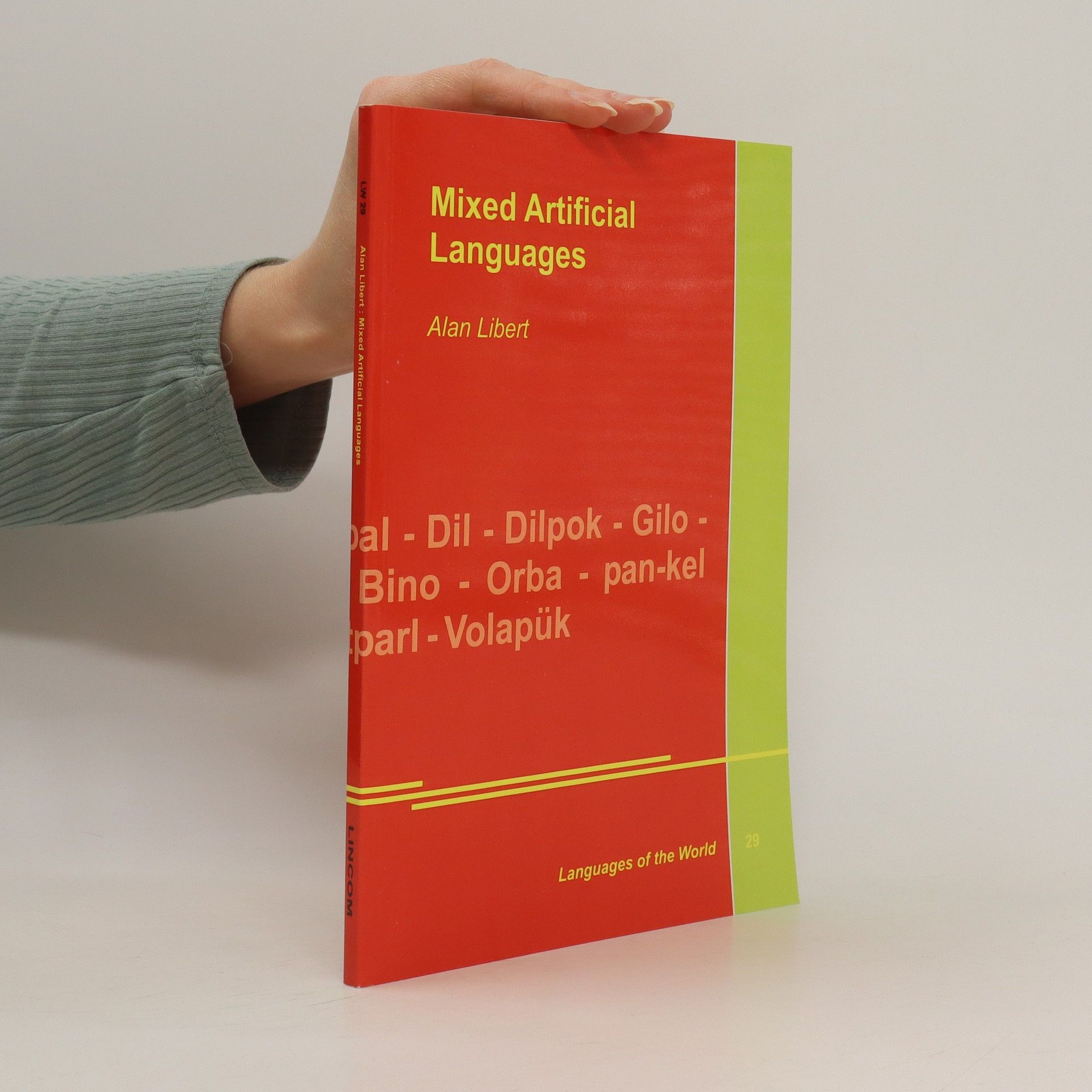Artificial languages are often classified on the basis of whether they are based on natural languages or are attempts to build a language (or at least the vocabulary of a language) "from scratch". The former type are called 'a posteriori' languages and the latter 'a priori' languages. This is not a strict dichotomy, but rather a spectrum, and there may be no truly a priori languages. However, languages with substantial a priori and a posteriori components have been labelled 'mixed' languages. This book is a survey of several such languages. After an introduction, there are chapters on phonetics, lexicon, morphology, syntax, and semantics. Given that these languages are partly a priori, one might wonder to what extent they conform to universals posited for natural languages, and this is examined with respect to various properties. The languages discussed include Volapük (by far the best known and most successful language of this type), the Blue Language, Gilo, pan-kel, and Vela. ISBN 3895868442. Languages of the World 29. 110pp. 2003. Paperback.
Alan Libert Livres


Artificial Descendants of Latin
- 106pages
- 4 heures de lecture
Among the hundreds of artificial languages created in recent centuries are a fair number of modified versions of Latin and languages which have taken many elements from Latin. These diverge in varying degrees and ways from Classical Latin. This book is a survey of such projects. The languages examined include Communia, Latino sine Flexione, Linguum Islianum, SPL and Universal-Latein. An introduction presenting the languages is followed by chapters on phonetics, lexicon, morphology, syntax, and semantics. Preface Abbrevations 1 Introduction 1.1 Carpophorophilus's Language 1.2 Kosmos 1.3 Latino Moderne 1.4 Latino sine Flexione 1.5 Latinulus 1.6 Linguum Islianum 1.7 Mundelingva 1.8 Myrana and Communia 1.9 Nov Latin 1.10 Reform-Latein 1.11 SIMP-LATINA (SPL) 1.12 Universal-Latein 1.13 Uropa 1.14 Weltsprache (Eichhorn) 1.15 Weltsprache (Volk and Fuchs) 2 Phonetics 2.1 Sound Inventories and Orthography 2.2 Suprasegmentals 3 Lexicon 3.0 General Issues 3.1 Forms of Nouns Used 3.2 Words for Modern Concepts 4 Morphology 4.0 General Issues 4.1 Nouns 4.2 Pronouns 4.3 Numerals 4.4 Adjectives 4.5 Adverbs 4.6 Verbs 4.7 Prepositions 4.8 Conjunctions 4.9 Particles and Interjections 5 Syntax 5.1 Word Order 5.2 Binding and the Use of Reflexive Pronouns 5.3 Pro-drop 5.4 Absolute Constructions 6 Semantics 6.1 Ambiguity and Homonymy 6.2 Synonymy 6.3 Idioms 6.4 Generics References.